 Time for some talk about money, because the above question is one that we are asked all the time by clients who are about to make an offer on a Florida property. But if you’re looking for a simple answer, you’ll be disappointed, so you may want to stop reading now: just like we tell clients who are on the point of buying, there is no one-size-fits-all answer!!!
Time for some talk about money, because the above question is one that we are asked all the time by clients who are about to make an offer on a Florida property. But if you’re looking for a simple answer, you’ll be disappointed, so you may want to stop reading now: just like we tell clients who are on the point of buying, there is no one-size-fits-all answer!!!
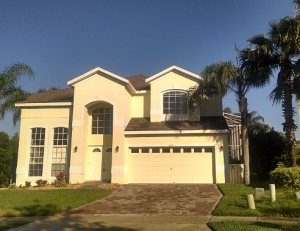 Ten years ago, at the height of the property frenzy, the answer to the question was “Not a lot!”. Many of today’s buyers, whether they are from Florida, other parts of the USA or even further afield (e.g. Canada, the UK) are fully aware of the bubble that burst around six or seven years ago and they are convinced that there are still big bargains to be had, if only they negotiate hard enough. So what’s the reality?
Ten years ago, at the height of the property frenzy, the answer to the question was “Not a lot!”. Many of today’s buyers, whether they are from Florida, other parts of the USA or even further afield (e.g. Canada, the UK) are fully aware of the bubble that burst around six or seven years ago and they are convinced that there are still big bargains to be had, if only they negotiate hard enough. So what’s the reality?
Well, one way to check it out is to look at actual sales figures, so that’s what we’ve done. It’s true that you can prove almost anything with statistics, but actual sales numbers are hard to manipulate! So we’ve looked at sales in a recent 180 day period covering three large vacation home communities in the Central Florida area (over 140 properties sold in total across all three communities) and here are the results:
Emerald Island
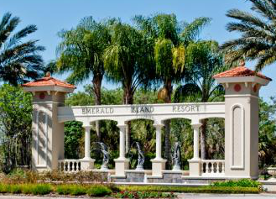 This is a gated resort community and one of the closest to the Disney theme parks, with properties that range from condos up to six bedroom homes (a few have been converted to be even larger!). It has it’s own clubhouse and includes a fitness center, sauna, games arcade, Internet cafe and free wifi around the pool areas, so you can understand it’s popularity.
This is a gated resort community and one of the closest to the Disney theme parks, with properties that range from condos up to six bedroom homes (a few have been converted to be even larger!). It has it’s own clubhouse and includes a fitness center, sauna, games arcade, Internet cafe and free wifi around the pool areas, so you can understand it’s popularity.
So how large a bargain can you drive as a prospective buyer? The 180 day sales figures show that sellers received 97% of the list price for their home on average. If you prefer a median number rather than an average, that shows 96%. Not much there, apparently, in the way of bargains.
But there’s more to consider. There were 24 sales during the period and the “lowest achieving” of the group only obtained 88% of the list price, a 12% reduction. That’s better! However, at the opposite end of the list, the “best achiever” from a sales perspective managed to get 119% of the list price. More on all of that later!
Highlands Reserve
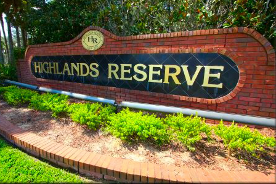 Just a few years older than Emerald Island, Highlands Reserve isn’t a resort-style community, nor is it gated, but it has one very big advantage: it has it’s own golf course. Renters (and owners) love the idea of living on a golf course and many owners market their properties successfully. So demand from home buyers should be high and prices fairly firm, shouldn’t they?
Just a few years older than Emerald Island, Highlands Reserve isn’t a resort-style community, nor is it gated, but it has one very big advantage: it has it’s own golf course. Renters (and owners) love the idea of living on a golf course and many owners market their properties successfully. So demand from home buyers should be high and prices fairly firm, shouldn’t they?
Judge for yourself: the average seller received 94% of his list price and the median figure was 95%. The best performer managed to get 104% of his asking price and the worst was at 86%.
Reunion
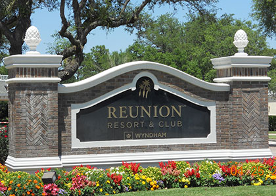 The largest of the three that we’ve looked at, Reunion has it all – gated, three golf courses designed by legends Palmer, Nicklaus and Watson, a water park, restaurant and hotel facilities. Properties range from modest-sized condos all the way through to enormous homes of 10, 11 and 12 bedrooms (maybe more by the time you read this!). It was started in a blaze of marketing about 10 years ago, initially soared and then fell to earth with the property “bust”, and is now recovering well. At the depths of the price crash, some sellers were desperate to get rid of their homes, but things have improved a lot now and the place has much more energy.
The largest of the three that we’ve looked at, Reunion has it all – gated, three golf courses designed by legends Palmer, Nicklaus and Watson, a water park, restaurant and hotel facilities. Properties range from modest-sized condos all the way through to enormous homes of 10, 11 and 12 bedrooms (maybe more by the time you read this!). It was started in a blaze of marketing about 10 years ago, initially soared and then fell to earth with the property “bust”, and is now recovering well. At the depths of the price crash, some sellers were desperate to get rid of their homes, but things have improved a lot now and the place has much more energy.
So how about sales? Are there some bargains to be had? In actual fact, the 180-day figure show an average achievement of 96% of the selling price (the same if you opt for the median). The least successful seller received 81% of his asking price, but the most successful collected 140%!
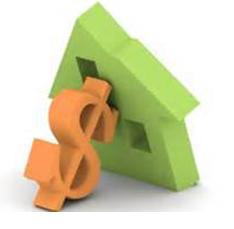 Ok, after examining ales in these three communities, let’s add some thoughts for you to consider:
Ok, after examining ales in these three communities, let’s add some thoughts for you to consider:
1. Whether it’s the average or the median, the numbers suggest that some price reductions are attainable but they are not enormous.
2. Why the big variation from the low of an 80%-level uo to 100% and more? I suggest that it is because of many and varied issues relevant to each the sale, including:
- The realism of the list price to begin with,
- How anxious the seller is to dispose of the property,
- How much the buyer is “in love” with the property
- The state of repair and decoration of the property,
- The presentation or staging of the home,
- Finance available to the buyer e.g. cash or mortgage, which can impact negotiations, and
- The buyer’s knowledge about the market, about other suitable homes and about how things work in Florida.
. . . and much more besides. So each transaction must be approached with the appropriate knowledge and realism and expectation. Therefore, try for a price reduction by all means – but don’t be surprised if you get an emphatic rejection!
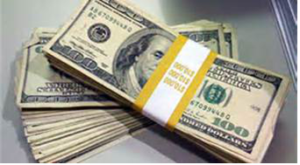 3. Why do some properties sell for more than the list price? In the case of the two mentioned above:
3. Why do some properties sell for more than the list price? In the case of the two mentioned above:
- Emerald Island 119% of list price: one house listed for approximately $400,000 sold for more that $470,000. That sale was a Foreclosure. And we cannot stress this too much as a lesson to buyers looking only for those “cheap, bargain” foreclosures: BEWARE. FORECLOSURES CAN BE A TRAP FOR THE UNWARY. They can be a bargain in some cases but a very expensive mistake in many others. Even if you think you know what you are doing, banks and mortgage companies are totally ruthless and play by a different set of rules than you realize – they have had a lot of practice! All may not be as it seems, you may well pay more for that apparent bargain foreclosure. Apologies if that seems a little over-the-top, but the reality is that it may well be understated.
- Reunion 140% of sale price: a $207,500 condo sold for $290,000. This was a Short Sale, which again involved bank approval/negotiation/input. And all of the words of caution in the paragraph above that relate to third-party (i.e. bank) involvement apply here too, but even more in this case.
The big lesson is that Short Sales and Foreclosures can be risky, in that they can produce some bargains but they can also cost you time and money and be far more expensive than you budget. Banks are increasingly setting foreclosures at market prices (sometimes even above) and taking a harder line of Short Sales. So keep an open mind and get some advice (it’s free) from people who have already been involved in the process before you go too far. Use our help, or that of someone else who cran guide you through the minefield that Foreclosures can be.
In conclusion, we hope that all of this gives you food for thought if you’re starting out on the purchasing route. We want you to understand all of the background before you decide on which property is right for you, so that you can make an informed purchase. And if that means that you recognize a need for assistance, just use this Contact Form to get in touch.

